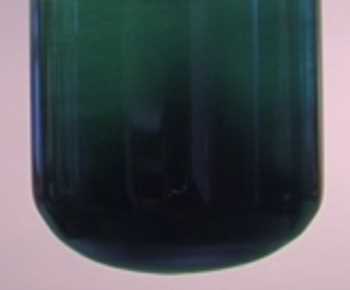






Chlorhydric acid (colourless solution) neutralises sodium hydroxide (colourless solution) producing sodium chloride (colourless in solution) and water: $NaOH$ $+$ $HCl$ $\longrightarrow $ $NaCl$ $+$ $H_2O$

Chlorhydric acid (colourless solution) neutralises magnesium hydroxide (white solid) producing magnesium chloride (colourless in solution) and water: $Mg(OH)_2$ $+$ $2HCl$ $\longrightarrow$ $ MgCl_2$ $+$ $2H_2O$

Chlorhydric acid (colourless solution) attacks magnesium producing very quickly magnesium chloride (colourless in solution) and hydrogen (light and colourless gas). $Mg$ $+$ $2HCl$ $\longrightarrow$ $ MgCl_2$ $+$ $H_2$

Chlorhydric acid (colourless solution) attacks zinc producing zinc chloride (colourless in solution) and hydrogen (light and colourless gas). $Zn$ $+$ $2HCl$ $\longrightarrow$ $ ZnCl_2$ $+$ $H_2$

Chlorhydric acid (colourless solution) attacks iron producing slowly iron(II) chloride (greenish in solution) and hydrogen (light and colourless gas). $Fe$ $+$ $2HCl$ $\longrightarrow $ $FeCl_2$ $+$ $H_2$

Chlorhydric acid (colourless solution) doesn't react with copper, silver or gold.

Chlorhydric acid (colourless solution) attacks copper(II) oxide (a black solid) producing copper(II) chloride (greenish-blue in solution) and water: $CuO$ $+$ $2HCl$ $\longrightarrow$ $ CuCl_2$ $+$ $H_2O$

Chlorhydric acid (colourless solution) attacks iron(III) oxide (ochred solid) producing iron(III)chloride (ochred in solution) and water: $Fe_2O_3$ $+$ $6HCl$ $\longrightarrow$ $ 2FeCl_3$ $+$ $3H_2O$

Chlorhydric acid (colourless solution) attacks sodium carbonate (colourless solution) producing sodium chloride (colourless in solution), carbon dioxide (a dense and colourless gas) and water: $Na_2CO_3$ $+$ $2HCl$ $\longrightarrow$ $ 2NaCl$ $+$ $CO_2$ $+$ $H_2O$

Chlorhydric acid (colourless solution) attacks calcium carbonate (a white solid, in shells or in the limestone of rocks) producing calcium chloride (colourless in solution), carbon dioxide (a dense and colourless gas) and water: $CaCO_3$ $+$ $2HCl$ $\longrightarrow$ $ CaCl_2$ $ +$ $CO_2$ $+$ $H_2O$
All acids react like chlorhydric acid in dilute solutions:
Acid and base produce salt and water.
Acid and non-noble metal (magnesium, zinc, iron) produce salt and hydrogen.
Acid and metal oxide produce salt and water.
Acid and carbonate produce salt and carbon dioxide and water.
We see:
The hydrogen $H$ atoms of the acids are responsible for their caracteristic reactions!